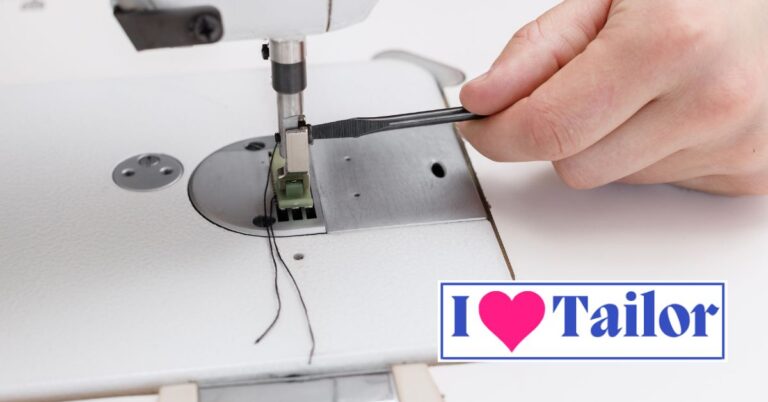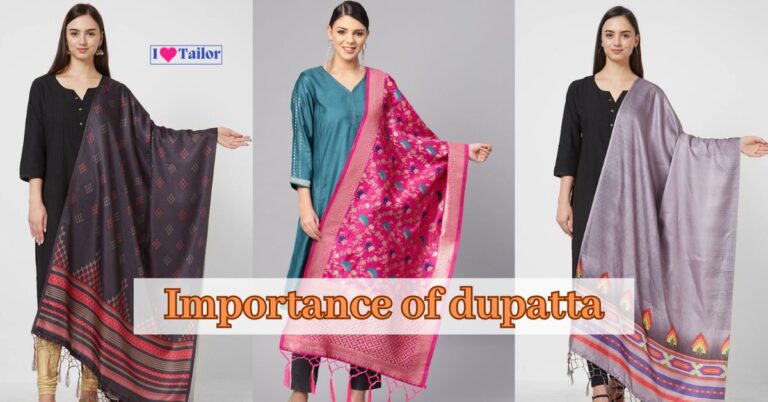Types of Clothes We Wear in All Seasons: Year-round clothing
In a world where people and weather are very different, knowing the Types of Clothes We Wear in All Seasons is important for more than just style. It’s also important for comfort, usefulness, and sometimes even life. This detailed guide will look at the most important clothing items for each season, making sure you’re ready for any weather problem, no matter where you are.
What is the importance of clothes?
For protection against the weather, clothes are very important. They keep us warm in winter and cool in summer. People may express themselves by showing off their style and culture. Wearing good clothes makes you feel better, which in turn boosts your confidence and ability to do daily tasks. Also, what people wear often shows their social and work rank, which affects first views and relationships. Clothes are an important part of life because they serve a practical purpose and have personal and social meanings. (Which Season is the best for fashion in Pakistan)
Types of Clothes We Wear in All Seasons
Different seasons bring about various atmospheric conditions and social occasions, necessitating a diverse wardrobe to navigate through the year comfortably and stylishly. The main categories of clothing that form the foundation of most wardrobes, adapting to these changes. Each plays a vital role in ensuring we’re well-equipped for the weather and activities each season brings.
1). Denim

- Spring: Light-wash jeans are perfect for daytime outings, pairing well with breezy tops.
- Summer: Denim shorts and skirts keep you cool and are versatile enough for beach days or city nights.
- Autumn: Darker denim comes back into play, offering warmth and pairing well with autumnal tones.
- Winter: Insulated or lined jeans provide that extra layer of warmth against the cold. (How to get the smell out of new jeans?)
2). Tops

Many varieties of tops may be worn in various climates and conditions.
- Spring: Light sweaters, long-sleeved shirts, and cardigans that go with everything are wonderful for summer.
- Summer: Tank tops, short-sleeved shirts, and tunics keep you cool in the sun.
- Autumn: Layering button-ups, flannels, and light knits is crucial when the temperature drops.
- Winter: Winter warmth requires heavy knits, turtlenecks, and thermal layers.
3). Footwear

- Spring: Perfect for transitional days, loafers, and ballerina flats return.
- Summer: Cool sandals, flip-flops, and open-toe shoes offer casual style to any ensemble.
- Autumn: As temperatures decrease, ankle boots and closed-toe shoes provide extra protection and comfort.
- Winter: Snow and rain need insulated boots and waterproof shoes.
4). Dresses

A dress may be styled for every season and is a simple one-piece ensemble.
- Spring: Midi dresses with sleeves can be worn with a light scarf or jacket.
- Summer: Maxis and sundresses are popular for their ease and airiness.
- Autumn: Shirt dresses and heavier fabric midis paired with tights and boots transition well into cooler weather.
- Winter: Long-sleeved, heavier fabric dresses work well when layered with tights, boots, and a thick cardigan or coat.
5). Undergarments

While not often seen, undergarments are the unsung heroes of comfort and can significantly affect how an outfit feels.
- All Seasons: The right undergarments are chosen based on the outer layers, with lighter fabrics in the summer and more insulating materials in the winter. Specialty items like thermal layers become particularly important in colder months.
6). Swimwear

Essential for summer and vacation activities, swimwear is a category all its own.
- Summer: Swimsuits, bikinis, trunks, and cover-ups are vital for beach and poolside activities.
- Other Seasons: May still be used for indoor pools, spas, or tropical getaways.
7). Sleepwear

Comfort is key for a good night’s sleep, and sleepwear often reflects the temperature needs of each season.
- Summer: Light, breathable pajamas or nightgowns.
- Winter: Warmer options like flannel or thicker cotton.
- Spring/Autumn: Transitional pieces like long-sleeved but lighter pajamas.
8). Outerwear

The first defense against the elements, outerwear varies greatly depending on the season.
- Spring: Trench coats and light jackets.
- Summer: Rarely needed, but light cardigans or shawls can be useful for cooler evenings.
- Autumn: Leather jackets, heavier blazers, and wool coats.
- Winter: Insulated jackets, parkas, and coats are necessary for warmth and protection.
There are several types of clothes We wear in all seasons since they work for different events and seasons. Most outfits may be completed with belts, gloves, scarves, and jewelry. So much apparel means everyone can find something they like. For each event, weather, or style, this eclectic assortment offers something for you. Whether you desire useful, stylish, or both, clothing enables you to express yourself and feel comfortable. (Top Fashion Tailoring Trends of the Year 2024)
Spring: A Time for Transition
Winter layers are exchanged for lighter, brighter apparel when the snow melts and spring buds sprout. Spring symbolizes regeneration, and our clothes reflect this.
- Breathable Fabrics: Spring’s shifting temperatures suit cotton, linen, and silk. Materials keep you cool and avoid overheating.
- Vibrant Colors and Patterns: Spring brings vibrant hues and flowery designs to match nature.
- Light Jackets and Cardigans: Perfect for those cooler moments, they’re easy to remove when the day warms up.
- Long-Sleeve Shirts and Blouses: They provide coverage during cooler mornings but are light enough for the afternoon sun.
- Jeans and Light Trousers: Versatile enough to pair with various tops, they’re perfect for fluctuating temperatures.
- Skirts and Dresses: Paired with leggings or tights, they transition well from the cold of winter into the warmer spring days.
Summer: Embracing the Heat
Now that summer is here, everyone is thinking about how to keep stylish while still being cool and comfortable.
- Light and Airy Attire: Loose-fitting clothes made from light fabrics like cotton and linen are perfect for allowing air circulation and keeping the body cool.
- Protective Wear: Wide-brimmed hats, light scarves, and sunglasses aren’t just fashion statements — they protect you from the sun’s harmful rays.
- Shorts and Skirts: They keep you cool and are perfect for a day out in the sun.
- T-Shirts and Tank Tops: Breathable and light, they are staples for everyday wear.
- Light Dresses: Flowy and airy, dresses are an easy choice for staying cool and looking stylish.
- Swimwear: Essential for beach trips and poolside lounging, a good swimsuit is a summer must-have.
Autumn: The Cozy Transition
As the leaves change color, so does our wardrobe. Autumn is about cozying up and preparing for the cooler temperatures ahead.
- Rich Colors and Textures: Autumn’s palette is traditionally filled with deep reds, oranges, and browns. Fabrics like suede, velvet, and wool add warmth and texture to outfits.
- Boots and Closed Shoes: As the weather cools, footwear transitions from open sandals to closed shoes and boots, providing warmth and protection from the elements.
- Sweaters and Hoodies: They provide the warmth needed for cooler temperatures and are easy to layer over lighter tops.
- Jeans and Trousers: Paired with boots, they offer warmth and style.
- Scarves and Hats: Not only do they add a pop of style, but they also provide extra warmth.
- Light Jackets and Coats: Ideal for the progressively cooler weather, they’re versatile enough to pair with various outfits.
Winter: Bundling Up
In many places, winter means facing the cold head-on. Our clothing becomes our armor against the chill, with a focus on warmth, comfort, and moisture protection.
- Heavy Outerwear: Coats, parkas, and jackets lined with down or synthetic insulators are essential. Look for waterproof and windproof options to combat snow and wind.
- Layering for Warmth: Thermal undergarments, woolen sweaters, and heavy socks are layered to retain body heat.
- Accessories for Added Warmth: Gloves, beanies, and scarves are not just stylish but necessary for keeping extremities warm.
- Sweaters and Cardigans: Layered over base pieces, they provide much-needed warmth.
- Thermal Underwear: They are the unsung heroes of winter, providing an extra layer of insulation.
- Boots: Waterproof and insulated boots keep your feet warm and dry from the snow and slush.
FAQs
What type of clothes should you always wear?
Wear comfortable clothing, that fits well, and represents your style to feel confident and at ease wherever. Balance design and utility with high-quality materials that fit your lifestyle and environment. For daily clothing, choose versatile, durable wardrobe necessities.
How do you dress for different seasons?
Winter is spent layering up, summer is spent wearing light, breathable materials, and spring and fall are spent dressing for the weather. My clothing adapts to the weather, providing comfort and elegance year-round. My adaptable, climate-conscious clothing uses seasonal colors and materials.
What kind of clothes do you like to wear and why?
I like wearing comfy, adaptable outfits that match my style and habits. I choose soft, breathable textiles like cotton for comfort and functionality, enabling me to move at leisure throughout the day. Simple and adaptable, these clothes are perfect for my busy lifestyle.
Why do we wear cotton clothes in summer?
Because cotton is lightweight and breathable, we use it in summer to stay cool and absorb perspiration. This natural fabric is perfect for hot weather since it’s comfortable. Its smoothness and resilience make it a pleasant, long-lasting summer clothing.
Final Thoughts
Understanding and adapting to the seasonal demands of your locale doesn’t mean sacrificing style for comfort or vice versa. It’s about making informed choices that reflect both the weather and your style. With this guide, “Types of Clothes We Wear in All Seasons” you’re now equipped to face any season with confidence and flair.
Remember, fashion is about making a statement that matches the seasons, not simply following trends. So embrace the cycle, mix and match, and create a smart, adaptable wardrobe.







